
PowerPoint 2010
Working with Tables
Introduction
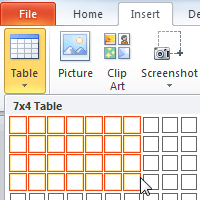
Tables are another tool you can use to display information in PowerPoint 2010. A table is a grid of cells arranged in rows and columns. Tables can be customized and are useful for various tasks such as presenting text information and numerical data.
In this lesson, you will learn how to insert tables, apply table styles, and format tables using various commands.
Working with tables
In PowerPoint, tables are useful for organizing and presenting data. To use tables in your slide show, you'll need to know how to insert them, apply table styles, and format them.
To insert a blank table:
- On the Insert tab, click the Table command.
- Hover your mouse over the diagram squares to select the number of columns and rows in the table.
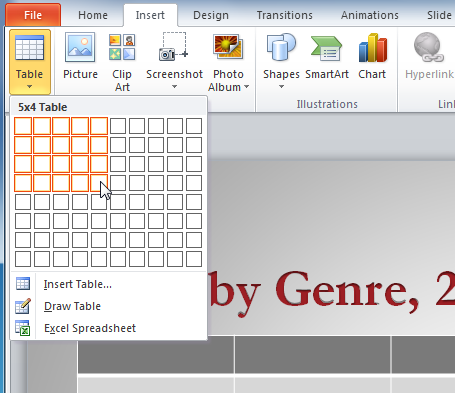 Inserting a table with the Insert tab
Inserting a table with the Insert tab - Click your mouse. The table will appear on the slide.
- You can now place the insertion point anywhere in the table to add text.
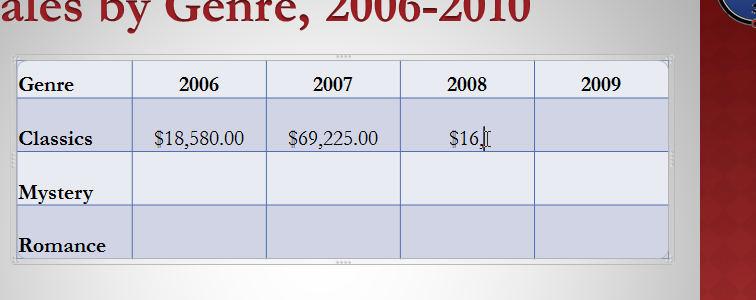 Adding text to the inserted table
Adding text to the inserted tableTo make sure your table looks good with the slide layout, you can also insert a table using the placeholder. Click the Insert Table icon in the placeholder, then enter the desired number of rows and columns.
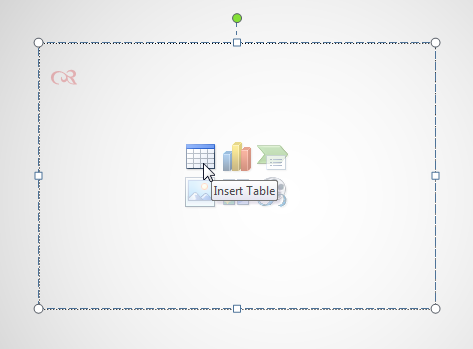 Inserting a table in the placeholder
Inserting a table in the placeholderTo move a table:
- Place the cursor over the edge of the table. The cursor will turn into a cross with arrows
 .
. - Click and drag the table to the desired location.
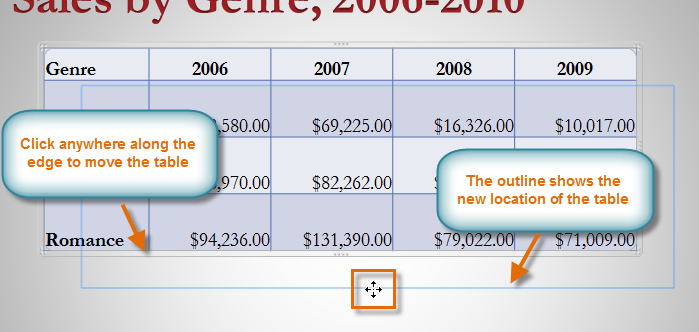 Moving a table
Moving a table - Release the mouse button to drop the table in the new location.
Modifying tables
To resize a table:
- Position the mouse over one of the sizing handles located around the edge of the table. The cursor will become a pair of directional arrows
 .
.
 Using the sizing handles to resize a table
Using the sizing handles to resize a table - Click, hold, and drag your mouse to make the table larger or smaller.
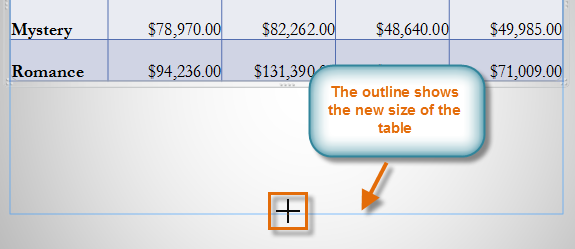 Resizing a table
Resizing a table - Release the mouse. The table will be resized.
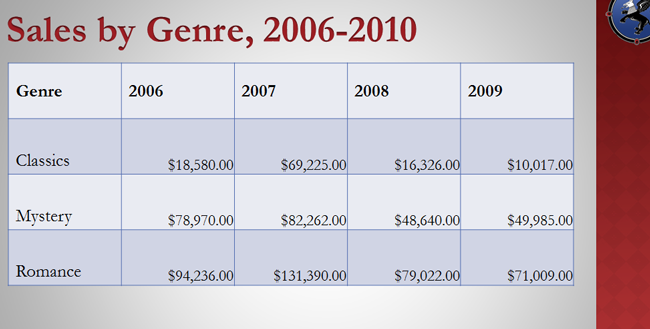 The resized table
The resized table
To add a column or row:
- Place the insertion point in a cell adjacent to the location where you wish to add a row or column.
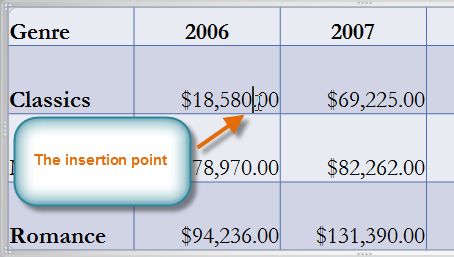 Placing the insertion point to insert a new row
Placing the insertion point to insert a new row - Select the Table Tools Layout tab, and locate the Rows & Columns group.
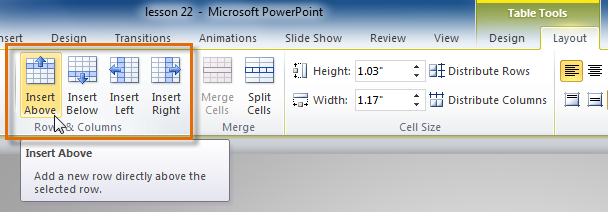 Inserting a new column or row
Inserting a new column or row - If you would like to insert a new row, select either Insert Above or Insert Below. If you would like to insert a new column, select either Insert Left or Insert Right.
- A new row or column will appear.
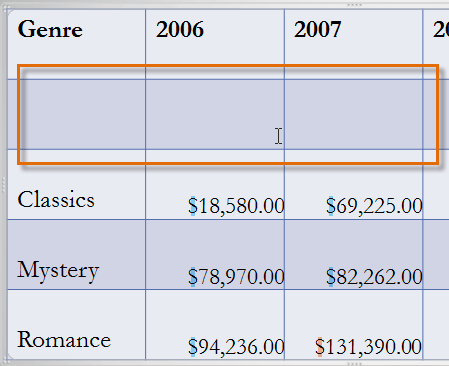 The inserted row
The inserted row
To delete a row or column:
- Select the row or column by placing the insertion point in any cell in that row or column.
- Select the Table Tools Layout tab.
- In the Rows & Columns group, click Delete. A drop-down menu appears.
- Select Delete Rows or Delete Columns.
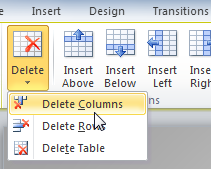 Deleting a column
Deleting a column
Modifying the table style
To apply a table style:
- Click anywhere on the table. The Table Tools tab will appear on the Ribbon.
- Select the Table Tools Design tab, and locate the Table Styles.
- Click the More drop-down arrow to see all of the table styles.
 Changing the table style
Changing the table style - Hover the mouse over the various styles to see a live preview.
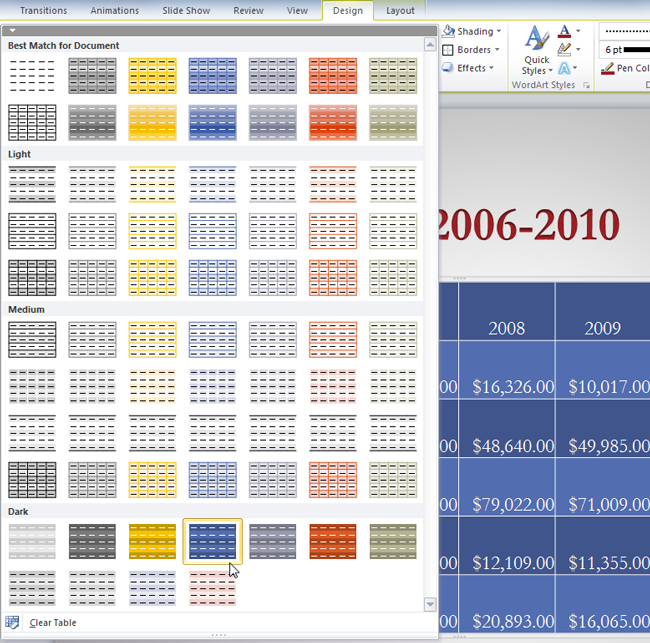 Previewing the new table style
Previewing the new table style - Select the desired style.
 The modified table
The modified table
To change the table styles options:
Once you've chosen a table style, you can turn various options on or off to change the appearance of the table. There are six options: Header Row, Total Row, Banded Rows, First Column, Last Column, and Banded Columns.
- Click anywhere on the table. The Table Tools tab will appear.
- Click on the Table Tools Design tab.
- Hover the mouse over each option in the Table Style Options group to see an explanation of what it does, and check or uncheck the desired options.
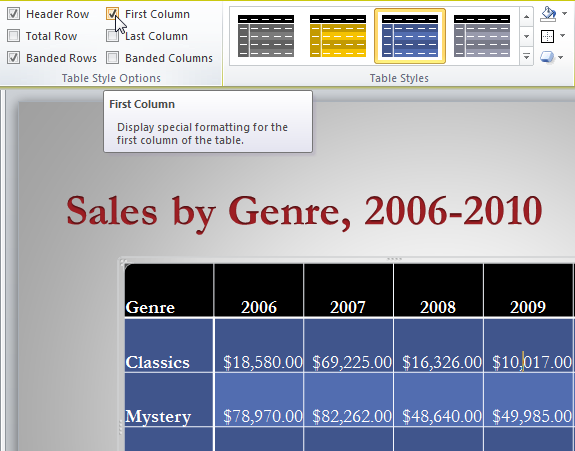 Checking and unchecking table style options
Checking and unchecking table style options
Depending on which Table Style you're using, certain Table Style Options may have a somewhat different effect. You may need to experiment to get the exact look you want.
To add borders to a table:
- Select the cells you wish to add a border to.
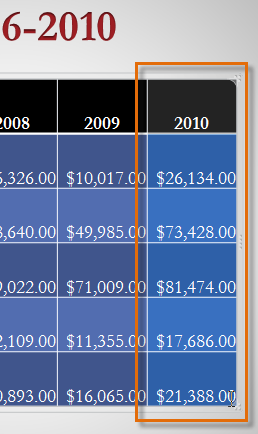 Selecting cells to add borders
Selecting cells to add borders - From the Table Tools Design tab, select the desired Line Style, Line Weight, and Pen Color.
 Selecting border options
Selecting border options - Click the Borders drop-down arrow.
- From the drop-down menu, select the desired border type.
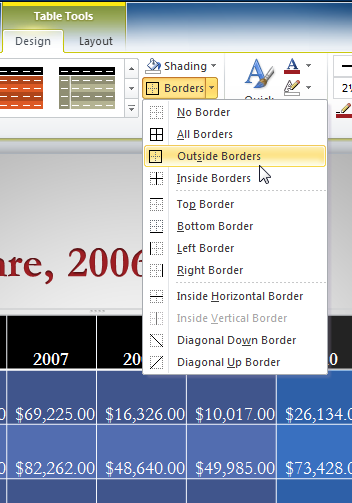 Selecting a border
Selecting a border - The border will be added to the selected cells.
 The added border
The added border
Modifying a table using the layout tab
When you select a table in PowerPoint 2010, Design and Layout tabs appear under Table Tools on the Ribbon. Using commands on the Layout tab, you can make a variety of modifications to the table.
Click the buttons in the interactive below to learn about the different ways you can modify a table with the Layout tab.
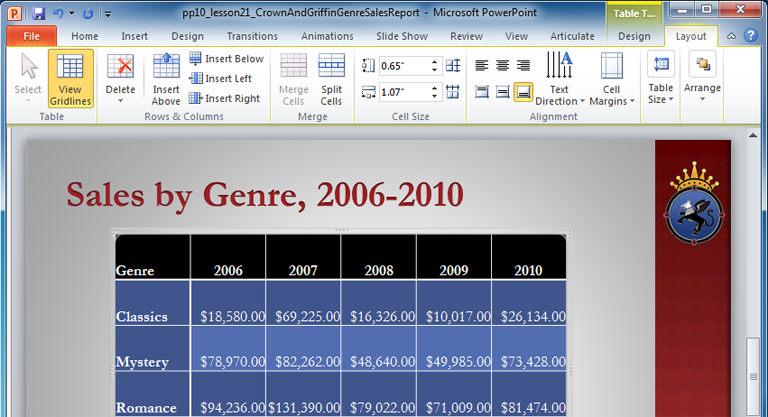
Change Text Direction
Making the text vertical can add style to your table, and it also saves space, allowing you to fit more columns in your table.
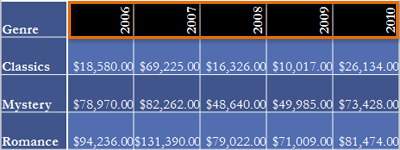
Align Cell Text
By changing the alignment of a cell, you can control exactly where the text is located. In the example below, the cell text is aligned to the bottom right.

Distribute Rows/Columns
To keep your table looking neat and organized, you may want to distribute the rows or columns equally, which makes them all the same size. You can distribute the rows or columns for the entire table, or just a portion of it.
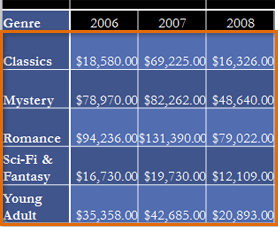
Change Cell Size
You can type in a desired row height or column width for your cells. If you prefer, you can click AutoFit, and it will automatically adjust the column widths based on the text inside them.
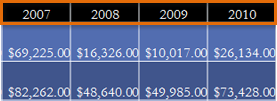
Merge and Split Cells
Some tables require a layout that doesn't conform to the standard grid. In those cases, you may need to merge or split cells.
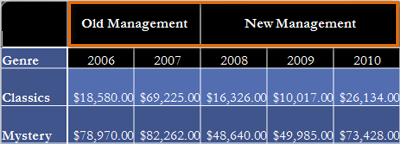
Add Rows and Columns
You can insert or delete rows and columns in your table. This can be especially useful if you need to add something to the middle of your table.
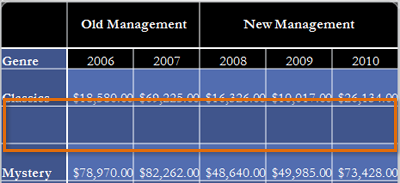
Challenge!
- Open an existing PowerPoint Presentation. If you want, you can use this example.
- Insert a new table with three columns and four rows. If you are using the example, resize the table on Slide 5.
- Apply a Table Style.
- Use the Table Style Options to make your table have banded rows and a header row.
- Delete a column from the table.
- Add a border to one of the rows in the table.
